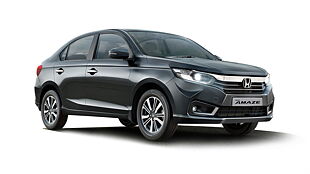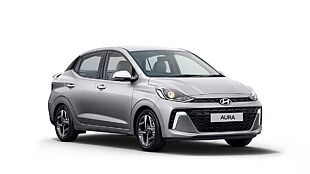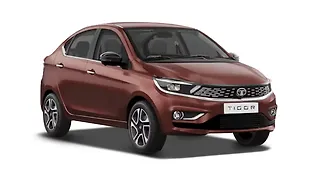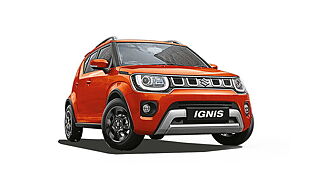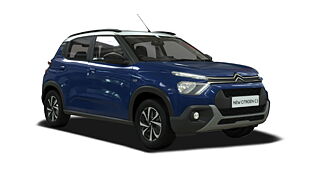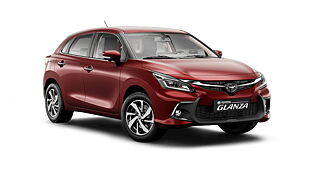Tata Tigor [2017-2018] Revotorq XE
|Rate & Win
- Tigor [2017-2018]
- 360° View
- Specs & Features
- Variants
- Colours
- User Reviews
discontinued
Variant
Revotorq XE
City
Show price in my city
Rs. 6.05 Lakh
Last Recorded PriceTata Tigor [2017-2018] Revotorq XE Review
With the success of the Tiago, Tata seems even more confident of the Tigor doing well (which is essentially a compact sedan version of the hatch). Despite the recent lull for sedans in favour of crossovers, the Indian manufacturer is sure of enticing the Indian buyer with its coupe like roofline and expected aggressive pricing.
What is it?
How is it on the inside?
How does it drive?
Should I buy one?
Where does it fit in?
Specifications & Features
- Specifications
- Features
- Specifications
- Features
Specifications
Engine & Transmission
Engine1047 cc, 3 Cylinders Inline, 4 Valves/Cylinder, DOHCEngine TypeRevotorq, CRAIL with MULTI DRIVEFuel TypeDieselMax Power (bhp@rpm)69 bhp @ 4000 rpmMax Torque (Nm@rpm)140 Nm @ 1800 rpmMileage (ARAI)24.4 kmplDrivetrainFWDTransmissionManual - 5 GearsTurbocharger / SuperchargerTurbochargedValve/Cylinder (Configuration)4, DOHCDimensions & Weight
Length3992 mmWidth1677 mmHeight1537 mmWheelbase2450 mmGround Clearance170 mmKerb Weight1100 kgCapacity
Suspensions, Brakes, Steering & Tyres
Features
Exterior
Braking & Traction
Safety
Comfort & Convenience
Lighting
Locks & Security
Doors, Windows, Mirrors & Wipers
Entertainment, Information & Communication
Mobile App Features
Storage
Airbags
Seats & Upholstery
Instrumentation
Manufacturer Warranty
Other Tigor [2017-2018] Variants
| Variants | Price | Specifications | |
|---|---|---|---|
Rs. 6.05 Lakh | 5 Person, FWD, 140 Nm, 170 mm, 1100 kg, 419 litres, 5 Gears, Revotorq, CRAIL with MULTI DRIVE, No, 35 litres, No, No, No, 3992 mm, 1677 mm, 1537 mm, 2450 mm, 140 Nm @ 1800 rpm, 69 bhp @ 4000 rpm, No, Yes (Manual), No, 0, No, 0, No, No, No, No, 0, 5 Doors, 24.4 kmpl, Diesel, Manual, 69 bhp | Get Offers from Dealers |
Similar Cars
Explore Used Tata Tigor
Colors
Espresso Brown
Copper Dazzle
Berry Red
Platinum Silver
Pearlescent White
View More Colours
Write a detailed review and you can win Amazon voucher worth Rs. 2,000
Reviews
- (1 Ratings) 1 Reviews
5.0/5
- Awesome FeelExterior Feels awesome, new fresh look by TATA. Interior (Features, Space & Comfort) Much better experience than previous Cars by TATA. Engine Performance, Fuel Economy and Gearbox Engine Performance is not that much expected compared to Desire / Xcent. As Tigor has 1.05 engine. But actual output is awesome. Never faces lagging issues. Fuel economy is just awesome. Got 21 KMPL on highway after 1st start. had awesome experience for driving 900Kms on next day after delivery. Ride Quality & Handling Riding is smooth caus of its small & comfirtable steering wheel. Tyres size is also compatible comparing to Height & length. Suspensions also best in class. Final Words Its a compact & new style sedan by TATA. after sale service is also improving. Best vehicle in low budget criteria. Areas of improvement Till Now everything is Up to the mark.Steering, handeling, Boot Space, Comfirtable seating positionEngine Noise, Engine Capacity 1.0 ltrRating parameters(out of 5)5
Exterior
5Comfort
5Performance
5Fuel Economy
5Value For Money
About the ReviewerPurchase NewDriven forFew thousand kilometersMileage21 kmplWas this review helpful?10
- Home
- Tata Cars
- Tigor [2017-2018]
- Revotorq XE

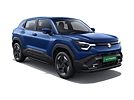


![Tata Tigor [2017-2018] Revotorq XE Tata Tigor [2017-2018] Revotorq XE](https://imgd.aeplcdn.com/664x374/cw/ec/20014/Tata-Tigor-Exterior-118817.jpg?wm=0&q=80)
![Tata Tigor [2017-2018] Right Front Three Quarter Tata Tigor [2017-2018] Right Front Three Quarter](https://imgd.aeplcdn.com/664x374/cw/ec/20014/Tata-Tigor-Right-Front-Three-Quarter-93563.jpg?v=201711021421&q=80)
![Tata Tigor [2017-2018] Right Rear Three Quarter Tata Tigor [2017-2018] Right Rear Three Quarter](https://imgd.aeplcdn.com/664x374/cw/ec/20014/Tata-Tigor-Right-Rear-Three-Quarter-108316.jpg?v=201711021421&q=80)

![Tata Tigor [2017-2018] Rear View Tata Tigor [2017-2018] Rear View](https://imgd.aeplcdn.com/664x374/cw/ec/20014/Tata-Tigor-Rear-view-108315.jpg?v=201711021421&q=80)
![Tata Tigor [2017-2018] Left Rear Three Quarter Tata Tigor [2017-2018] Left Rear Three Quarter](https://imgd.aeplcdn.com/664x374/cw/ec/20014/Tata-Tigor-left-rear-three-quarter-108314.jpg?v=201711021421&q=80)
![Tata Tigor [2017-2018] Left Side View Tata Tigor [2017-2018] Left Side View](https://imgd.aeplcdn.com/664x374/cw/ec/20014/Tata-Tigor-Left-Side-View-108313.jpg?v=201711021421&q=80)

